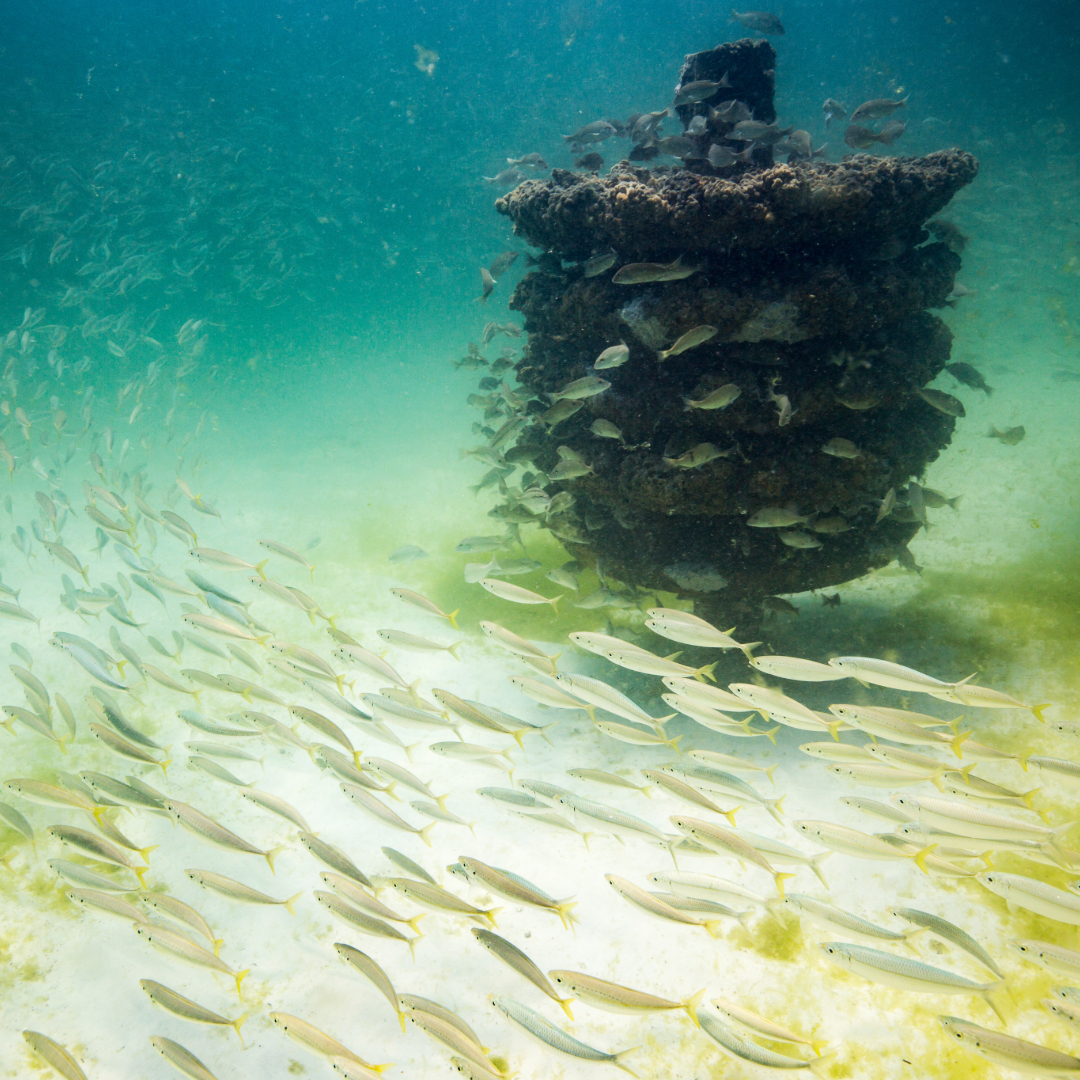Artificial reef in Walton County, 2017. Image by Bernard Brzezinski, University of Florida.
Florida Sea Grant’s Artificial Reef Legacy is a 3-part series that explores the rich history of artificial reefs in Florida and highlights Florida Sea Grant’s longstanding support through science, monitoring, outreach, and education. In this installment, Dr. Bill Lindberg shares some of the early beginnings of Florida Sea Grant’s artificial reef effort.
Submerge into the depths of Florida’s Gulf Coast, and you might uncover sunken ships, antiquated bridge structures, and formations resembling pyramids and spheres with Swiss-cheese-like holes. While they might seem out of place and even otherworldly, these structures terraform vibrant landscapes, colonized by barnacles, algae, and coral. Known as artificial reefs, these man made underwater structures have been used for over a century to provide marine habitats.
Don’t let the word ‘artificial’ fool you. Though it suggests something modern or even futuristic, the practice of creating artificial reefs actually dates back to the 1950s and ’60s. During this time, local fishermen began placing ‘materials of opportunity’ like railroad cars, buses, and appliances to attract marine life. While some deteriorated quickly, today’s artificial reefs are carefully selected for durability and environmental safety.
“They mimic some of the natural things that we find, like a Northwest Florida limestone, but as you go further south, some of the coral reefs, those will be some good things that we’re trying to mimic,” says Scott Jackson, Florida Sea Grant UF/IFAS Regional Specialized Extension Agent in Bay County.
Strategically placed, artificial reefs help reduce fishing and diving pressure on sensitive natural habitats, protect coastlines from storm damage, and ease overcrowding at popular natural reefs, especially in Florida’s recreational diving areas.
Florida has one of the most active artificial reef programs in the U.S. Since the 1940s, more than 4,300 public artificial reefs have been placed in state and federal waters off Florida’s coast.
Artificial reefs are often considered important for tourism-based economies.
- On average, 48% of anglers utilize Florida’s artificial reefs, generating $3.1 billion in annual economic activity.
- Artificial reefs generate 39,118 jobs and $4.4 billion in economic output and income for Floridians.
- For every $1 spent on artificial reefs in the Florida Panhandle, the economic benefit of artificial reef expenditures returns $138.
Thanks to decades of Florida Sea Grant involvement with Florida Fish and Wildlife Conservation (FWC), the state’s artificial reef program has evolved, using the best available science to guide reef creation and monitoring. As of 2019, Florida Sea Grant has been integral in the permitting, deployment, and monitoring of 25 new artificial reefs intended to support recreational fishing. This project added $25.8 million to the state’s economy and supported 325 jobs.
“The oceanography, fisheries, and seascapes around our coastline vary so broadly that a one-size-fits-all approach to artificial reefs just doesn’t work,” says Dr. William “Bill” Lindberg. “Florida Sea Grant’s research on artificial reef structures, fish behavior, economic impacts, and citizen science opportunities is so crucial—it ensures these artificial reefs meet local needs.”
Providing essential ecosystem and marine habitat functions, Florida Sea Grant artificial reef program has supported scientific research and monitoring efforts aimed at maximizing the design, placement, and conservation and angling functions of artificial reefs.
Beginning in the early 1990s, Dr. Bill Lindberg and his team used artificial reefs as a natural ocean laboratory, monitoring gag grouper life history stages and the impact of reef habitats on grouper populations, data important for fisheries management.
